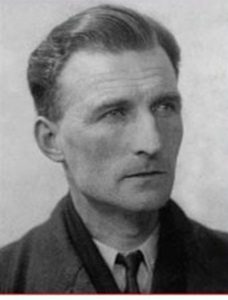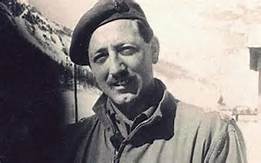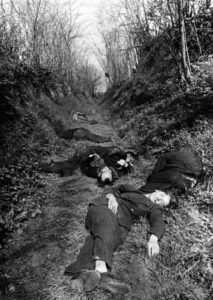Shortly after D-Day, the French Resistance swung into high gear. They blew up bridges, rail lines and roads, cut telephone and telegraph lines, destroyed power stations and cables, thoroughly disorganizing German troop movements and generally made life miserable for the Wehrmacht-Heer (German Army).
But in some cases, excited at the prospect of “liberation at last,” some of the Resistance leaders had trouble controlling their impatience for action. In some cases, patriotic fever got the better of prudence. Overriding the advice of their SOE advisors, who counseled guerilla tactics and avoidance of pitched battles with the better armed and more numerous Wehrmacht-Heer, they ambushed large German troop concentrations. The results were disastrous for the brave men and women of the FFI (Free French.
Such was the case at Vercours, a mountainous plateau surrounded by many cliffs, ridges and valleys situated in central France.
Following instructions from de Gaulle, Francois Huet, the group commander, assembled some 4000 Resistance fighters in Vercours to assist the Allies in slowing down German reinforcements on their way to the battlefront in Normandy. Emboldened by news of D-Day and the real prospect of French liberation, he was determined to inflict intense punishment on the occupiers.
Francis Cammaerts (code name: ‘Roger’), Huets’ SOE advisor, counseled caution. “François, you cannot win a pitched battle with these Germans. They have more men, more experienced men and more firepower than you do. We need to operate in small units. Be like ‘mosquitoes’ – harassing their troop convoys, disrupting their communications, hit them and run, but avoiding heavy engagements.”
Huet replied, “Roger, you have never been under occupation. You have never seen your friends lined up against a wall and shot. You have never seen families loaded into railroad cattle cars and hauled off to God know where. You have never had your house ransacked, your valuables stolen and your business stolen from you by rough, crude soldiers. The tables are turning on these bastards and I’m going to help tip it over!”
‘Roger’ let out a deep breath and shook his head. “They’re going to have their head handed to them,” he thought.
Alerted to the presence of so many Resistance fighters, General Karl Pflaum assembled the 157.Reserve Division, a large force of between 10,000 and 20,000 soldiers, supported by about 500 of the hated French Milice (a French collaborationist paramilitary unit).
The Resistance force appealed to the French agencies in London for arms and heavy weapons, but nothing was forthcoming.
The men and women of the Resistance under Francois Huet hoisted the French Tricolor, to be clearly seen by the enemy’s HQ at Grenoble, sang the Marseillaise and proclaimed the area “The Free Republic of Vercours.”
General Pflaum was not moved. He slung a noose around the entire camp and sent his Division on a rampage. Supported by heavy artillery and Luftwaffe bombers, they roared through the area in an all-out attack. All buildings were burned to the ground. Hospitals were burned with patients still in them. They shot everyone on sight and hung their bodies on meat hooks in butcher shops. Females were raped regardless of age. Houses were set on fire with entire families inside.
While the SOE men organized an escape of some of the Maquis, the Germans turned Vercours into a slaughterhouse. The fight raged for three weeks. The air support promised from Algiers never arrived. The Resistance in that area fought bravely until the bitter end when the Germans pulled out to counter the Allied landings in the south of France. They left behind innumerable casualties including 639 FFI fighters and at least 200 civilians KIA. FFI fought heroically and with valor, but it was a disaster.
Roger’ managed to escape the “hell of Vercours”, was later captured by the Gestapo, tortured and condemned to death. A Resistance leader bribed a prison guard, and ‘Roger’ had a new lease on life. He made his way back to England and participated other behind-the-lines action.




About Christine Granville role in Francis Cammerts release from Gestapo..:
„Granville’s most legendary exploit was securing the release of Cammaerts and two other agents after they had been arrested by the Gestapo and were awaiting execution. She did so by posing as a British agent sent to obtain their release and persuading the captors that, with a British invasion imminent, they would meet a terrible fate if they executed the prisoners. Somehow, the ruse worked – with the help of a 2 million franc bribe and Granville’s charm – and the agents walked free. For her exploits she was awarded a George Medal and OBE by the British and a Croix de Guerre by the French”..
/From Wikipedia/